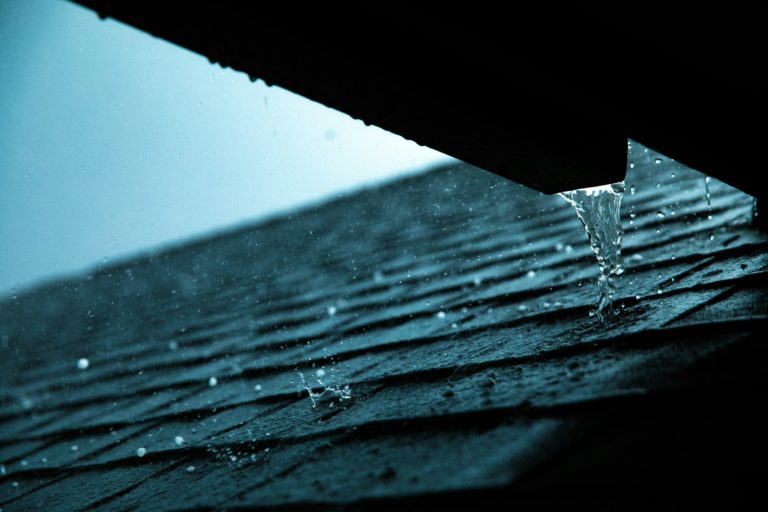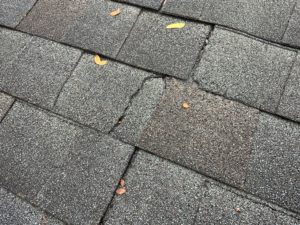Your roof works hard to protect your home, but it doesn’t last forever. Over time, weather and age can take a toll on your asphalt shingle roof. Knowing when it’s time for a replacement can save you from bigger, more expensive problems down the road. This article will help you recognize the signs that indicate your roof needs attention.
Missing, Cracked, or Curling Shingles
Shingles serve as the first line of defense for your roof against rain, wind, and sun. When shingles go missing, crack, or curl, your roof’s ability to protect your home weakens significantly. Missing shingles often occur after strong winds or storms. Check your roof after such events to ensure no shingles have blown away. If you discover bald spots, get them replaced quickly to prevent water infiltration.
Cracked shingles are another red flag. Shingles can crack from age or impact, like from hail or falling branches. Cracks allow water to seep in, leading to potential leaks and water damage inside your home. Regular inspections can help you spot and replace cracked shingles before they cause more severe issues.
Curling shingles are usually a sign of aging. Shingles curl when they start to lose their granules or when they have been installed improperly. This curling may cause them to lift, making it easier for the wind to pull them off. If you see curling shingles, it might be time to consider a full roof replacement. Keeping an eye on the condition of your shingles can save you hassle and expense in the long run.
Granules in Gutters and Downspouts
Granules are the tiny, coarse particles on the surface of asphalt shingles. They provide UV protection and add to the shingle’s durability. However, when shingles age or get damaged, these granules can loosen and wash away, often ending up in your gutters and downspouts.
If you notice a significant number of granules in your gutters, this is a sign that your shingles are wearing out. The granules might appear like coarse sand in your gutters or at the base of your downspouts. As these granules strip away, your shingles become more vulnerable to the elements, accelerating their deterioration.
Over time, the loss of granules can expose the asphalt layer of the shingle to the sun, causing it to become brittle and prone to cracking. Additionally, exposed shingles lose their fire resistance properties, posing a safety risk.
Regularly checking your gutters and downspouts for granules can help you catch this problem early. If you spot a lot of granules, it may be time for a roof inspection and potentially a replacement. Addressing this issue promptly can prevent further damage and help maintain your roof’s integrity.
Sagging Roof Deck
A sagging roof deck is a serious issue that can indicate structural problems. When the roof deck sags, it means the wooden framework under your shingles is either damaged, deteriorating, or poorly installed. If you notice that your roofline isn’t straight or that there are dips and sags, it’s important to take action.
A roof deck can start to sag due to prolonged exposure to moisture. Water can weaken the wood, leading to rot and decay. This often happens when roofing materials are damaged or leaking, allowing water to seep into the structure. Additionally, excessive weight from snow accumulation or improper roofing materials can also cause sagging.
Inspecting your attic can help you spot early signs of a sagging roof deck. Look for water stains, mold, or wet insulation, which can clue you in on moisture issues. If you notice any deformities in the roof decking, it’s time to bring in a professional. Ignoring a sagging roof deck can lead to costly repairs and structural damage. Replacing the old, damaged materials with new ones will ensure your roof remains sturdy and safe.
Moisture and Stains Inside the Home
Moisture and stains inside your home are clear signs of a leaky roof. Water stains on your ceilings and walls usually show up as discolored patches. These stains often appear after a heavy rainstorm, indicating that water is making its way through the roof.
Check your attic for signs of moisture as well. Look for damp insulation, wet wood, or mold growth. Mold, in particular, can pose health risks to your family and indicate a long-term moisture problem. If you notice a musty smell in the attic or upper floors, it’s likely from mold caused by water leaks.
Several factors can cause moisture and stains. Damaged or missing shingles may allow rainwater to seep through. Flashing, the metal that seals roof joints, can deteriorate or come loose, leading to leaks. Vent pipes and chimney stacks are other common leak points.
It’s crucial to address these issues promptly. Moisture can weaken your home’s structure, damage electrical systems, and foster mold growth. Hiring a professional to inspect and repair your roof can prevent further damage and keep your home safe and dry.
Conclusion
Knowing the top signs that indicate you need a new asphalt shingle roof is essential for maintaining the safety and integrity of your home. Missing, cracked, or curling shingles, granules in your gutters, a sagging roof deck, and moisture or stains inside your home are all red flags that shouldn’t be ignored. By catching these issues early, you can address them before they turn into bigger, more expensive problems.
Don’t wait until it’s too late to take care of it. If you think your roof may need attention, or in need of roof shingles replacement, Lighthouse Exteriors is here to help. Contact us today to schedule an inspection and ensure your home stays safe and dry all year round!







